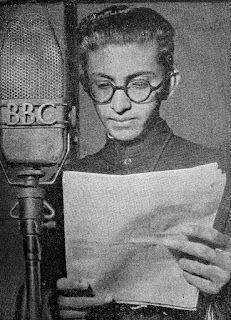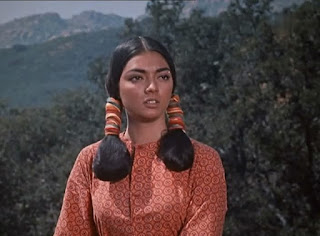REMEMBERING NOEL CRUSZ ON HIS 100TH BIRTHDAY-by Avishka Mario Senewiratne

Source:Tillthemountainsdisappearams
It was on a sunny morning at the Colombo Airport, Ratmalana in 1956, that crowds gathered to witness some of Hollywood’s biggest stars arrive to shoot a film in Ceylon. Renowned director David Lean, Alec Guinness and a host of other stars were in the island to act for what would be the Oscar-winning Best Picture film, Bridge on the River Kwai. However, the crowds and the stars were quite surprised to see a slender, neatly dressed Catholic priest holding a H16 Bolex camera filming them.
 |
| A H16 Bolex camera |
This was Fr. Noel Crusz OMI. The young priest would go on to interview Lean at the Mount Lavinia Hotel and visit the film set in the outskirts of Kitulgala. He had the privilege of witnessing the famous explosion when the train goes off the bridge on the Kelani river which “stood in” for the river Kwai.
 |
| A scene from Bridge on the River Kwai |
Noel Crusz was then the Director of the ‘Catholic Hour’ for Radio Ceylon, and a few years before had gone on a tour to Europe and the US to study religious mass media. In USA, he met and befriended some of Hollywood’s most popular actors and actresses, including Bing Crosby, Tyronne Power and Loretta Young, who would correspond with him for decades after. Many years later, he was invited by Sophia Loren to visit her in her home in Italy. He had the rare privilege to broadcast for the BBC, Vatican Radio, the Voice of America and some European radio networks. Apart from broadcasting, he had mastered an art not many in Sri Lanka were familiar with at that time….. film making.
Born on December 6, 1921, his siblings also achieved national and international recognition, in science and zoology, literature and poetry, in puppetry, in singing, and in photography. Receiving a good education from the Oblates of St. Peter’s College, Bambalapitiya, the young Noel was inspired by his teacher Fr. Peter Alcantara Pillai, OMI to join the priesthood. After his ordination just after Independence in 1948, he was appointed to the staff of his alma mater, St. Peter’s. It was during this time that Colombo’s Archbishop Thomas Cardinal Cooray OMI, recognised his potential and backed him to get involved in broadcasting.
 |
| St. Peter’s College in the 40s (courtesy the Peterite) |
Soon he would get involved in writing plays for stage and radio. Some of his notable productions were with J.O. Ebert’s Penguins group, who were the best at that time. These were plays like Pontine Marshes and Thy Kingdom Come, which drew thousands of girls and boys. At the same time, he went on to write for newspapers such as The Times of Ceylon, The Ceylon Daily News and The Messenger. His writing was concise, lucid and very readable. His magnum opus titled the Cocos Island Mutiny was first serialised in the evening tabloids in Sri Lanka and then published many years later as a book from his Master’s thesis for the University of Sydney.
Since the early 1950s Noel pursued serious film making. It was he who saw the young Familian Maureen Hingert and brought her to the attention of the media, way before she was crowned Miss Ceylon in 1957. After a series of short films, some not successful, Noel was inspired to film a phenomenal documentary in Italy with his Bolex camera gifted by Bing Crosby about St. Maria Goretti, where the saint’s real mother, siblings and murderer appear. The 40-minute colour film came out in 1953.
 |
| Maureen Hingert |
Noel went on to produce and direct some remarkable films during the ’50s and ’60s. These included Little Bike Lost (1956), Road to Boys’ Town (1958) and Palm Fringed Isle (1960). These films especially Little Bike Lost produced with the boys of St. Joseph’s College were screened all around the country drawing thousands of viewers. Truly, Noel Crusz was an unsung pioneer of Sri Lankan cinema.
 |
| A scene from Little Bike Lost, 1956 |
His outgoing personality, social acceptance and expertise in mass media were the envy of some of his contemporaries. The 1960s was a rough patch for Noel. Propelled by what Cardinal Cooray would call ‘a scandal’, Noel Crusz opted to leave the priesthood, as he no longer felt that was his calling. After several failed attempts, he was given the dispensation by Pope Paul VI to marry in the church. He married a distant cousin of his, Marie Tirzah.
After much controversy, Noel, now a layman, worked as a journalist for some newspapers including The Sun. After he and Tirzah migrated to Sydney, Australia, he went on to teach in secondary schools for the rest of his life. Despite living thousands of miles away from Sri Lanka, he never lost touch with the country and would constantly write to the papers as an astute observer of contemporary affairs. He passed away after a long illness in 2003.
This year marks the centenary of Noel Crusz’s birth. An all-round media man, his diverse potential made him one of a kind.
………………….
Special thanks to his nephew, Robert Crusz and his younger brother Jerome Crusz
A.M.S.







